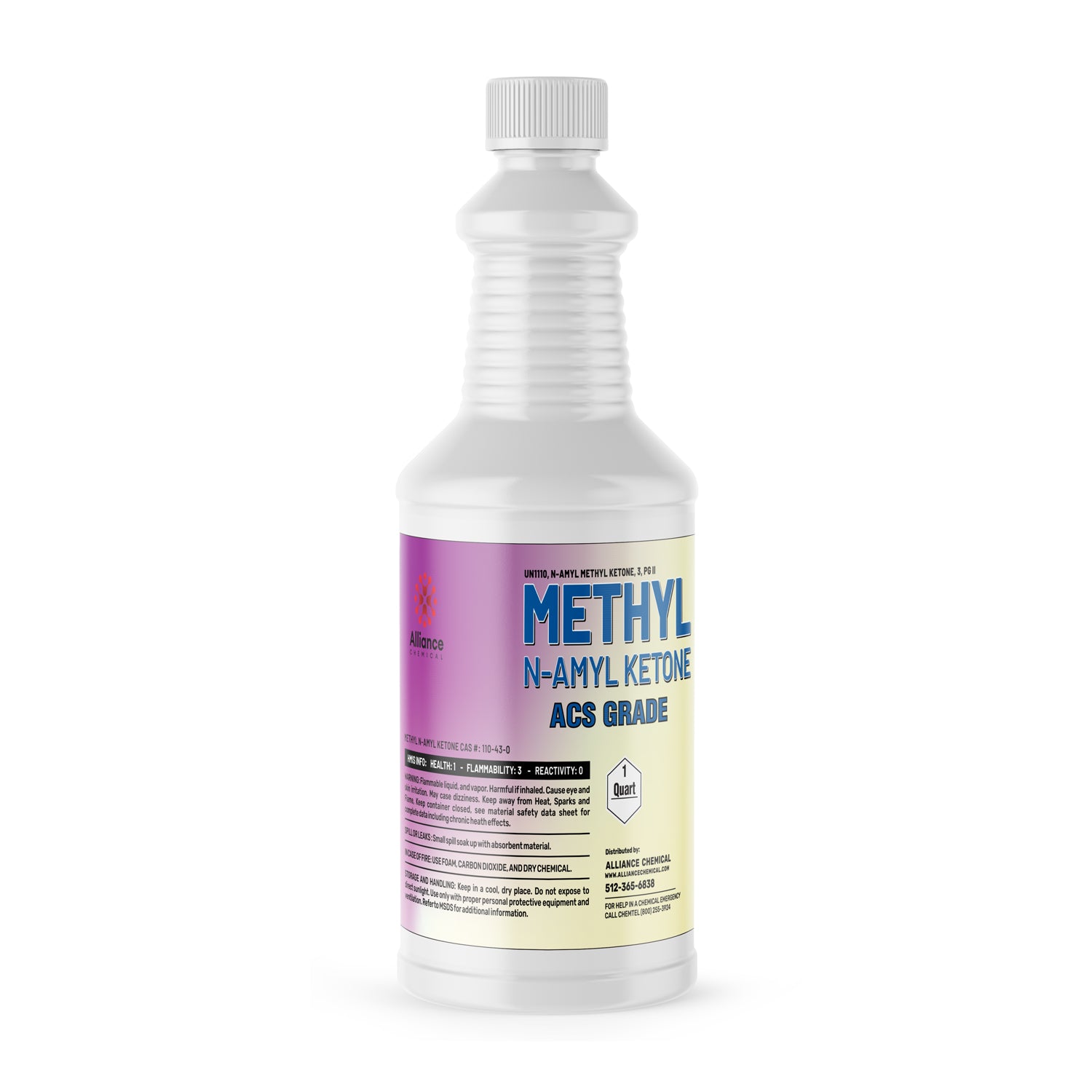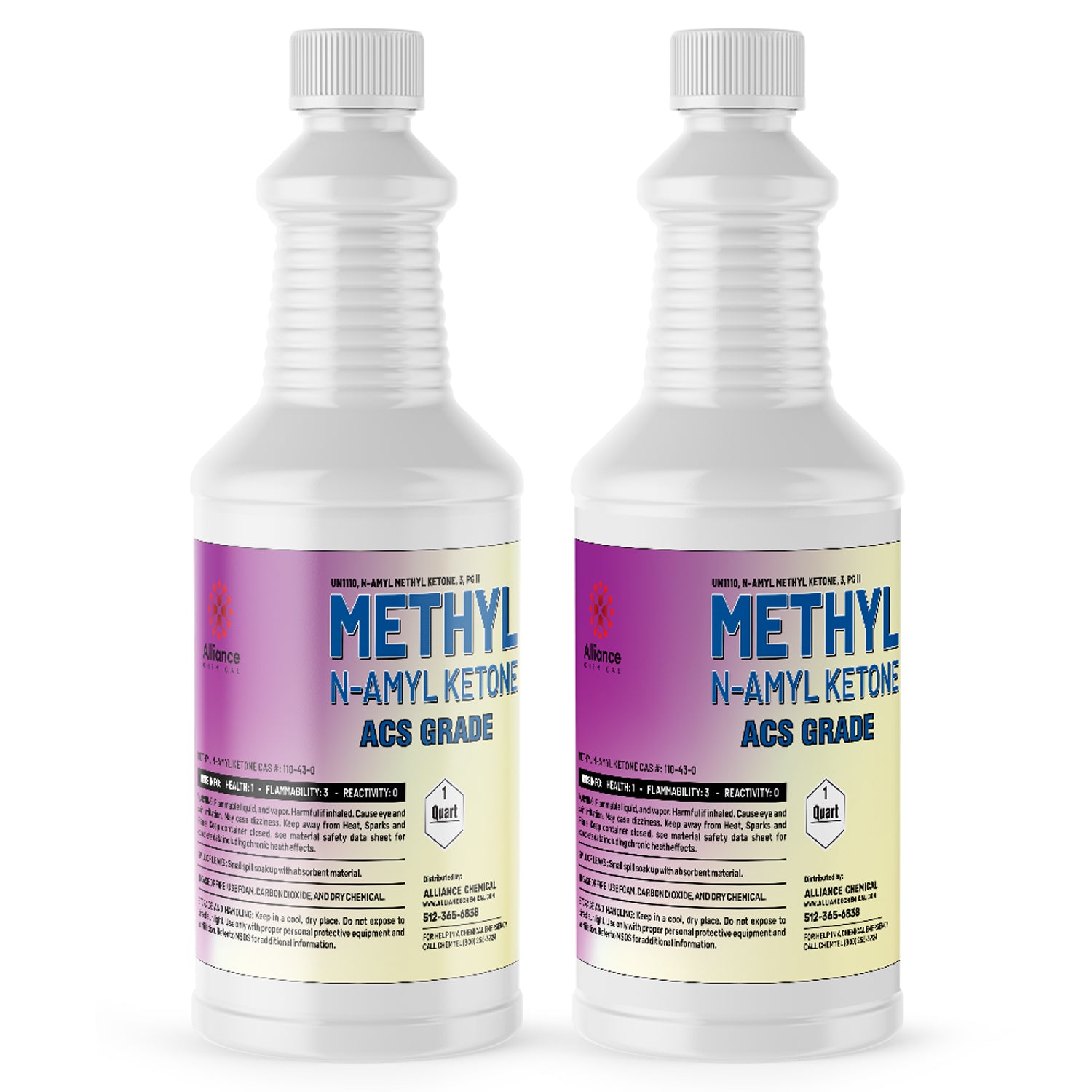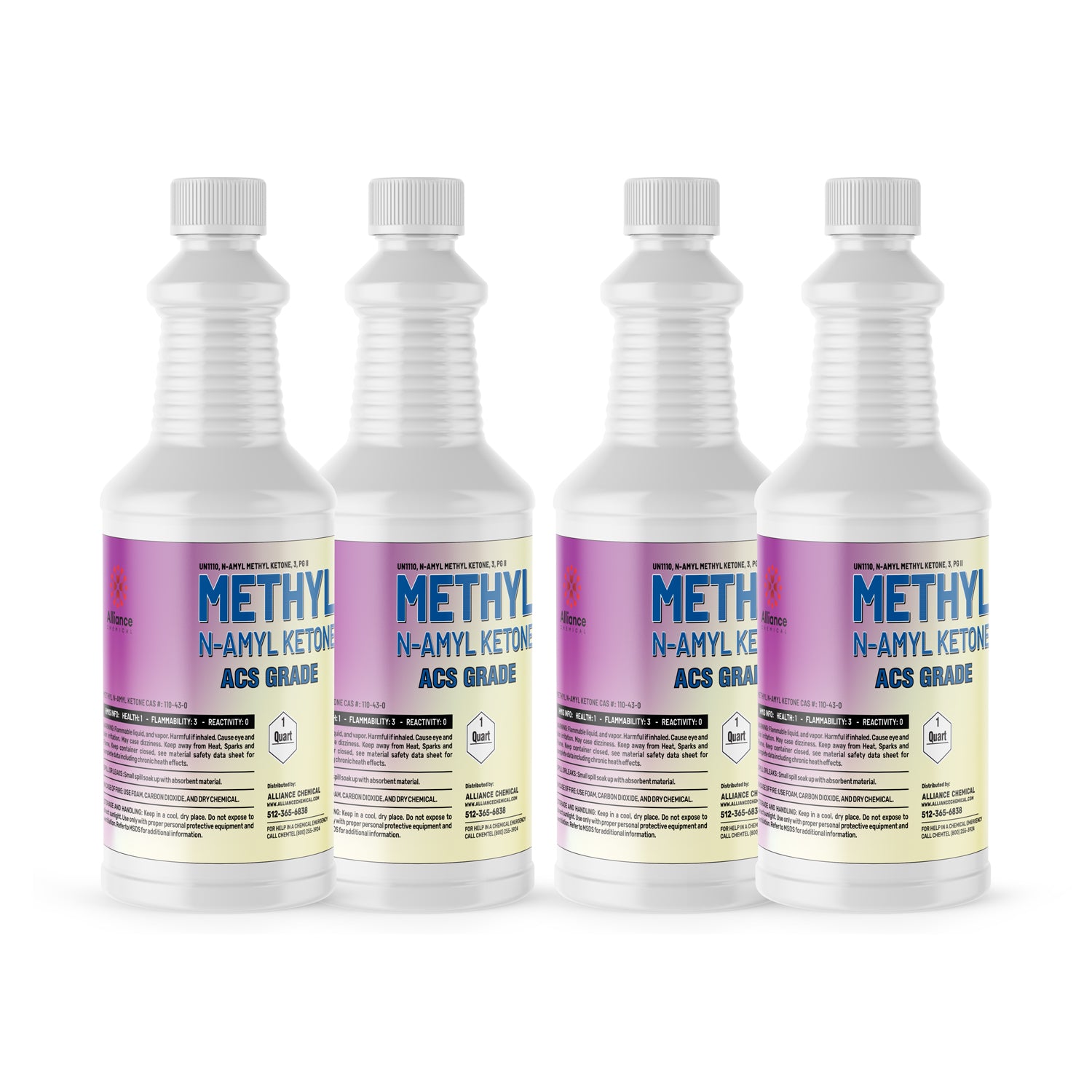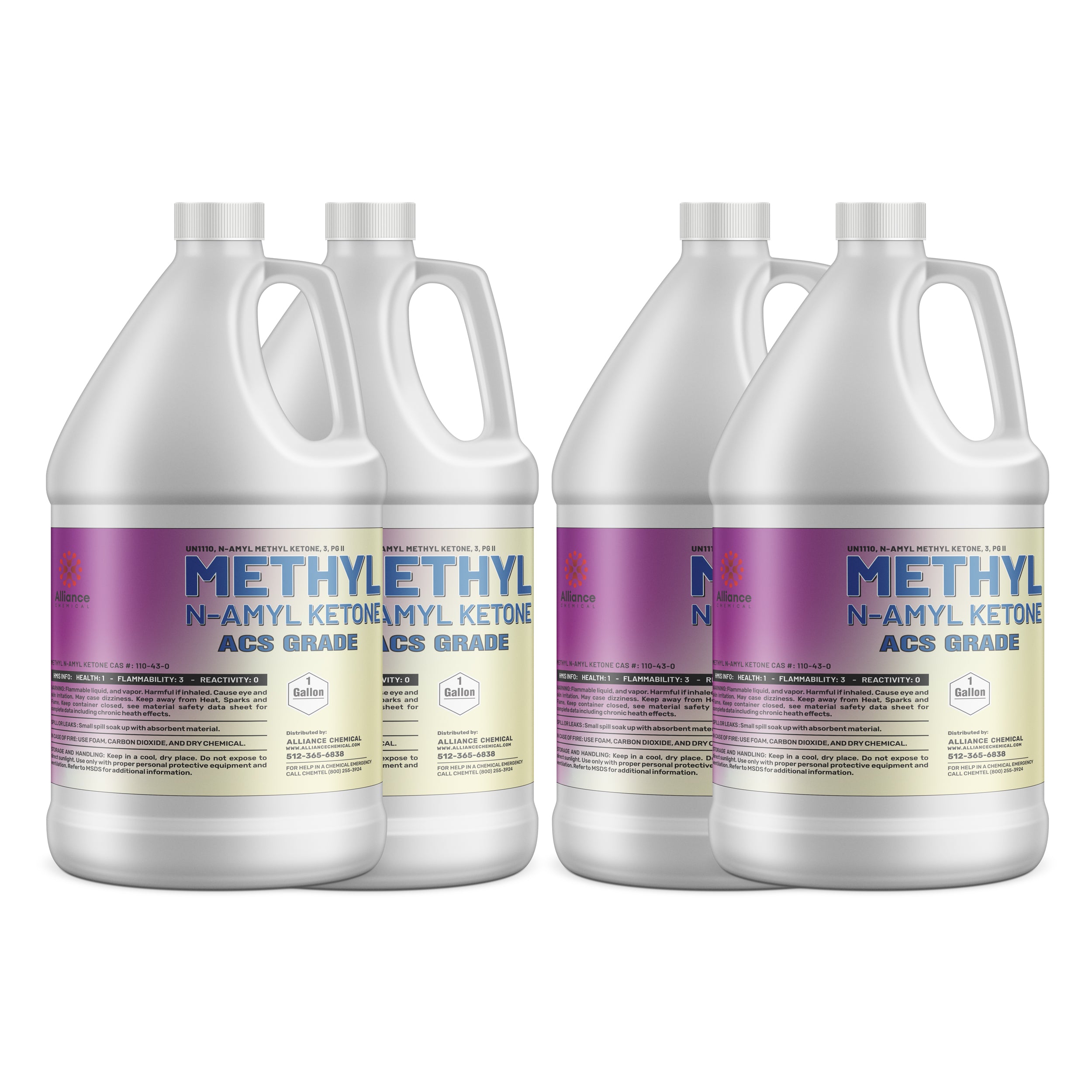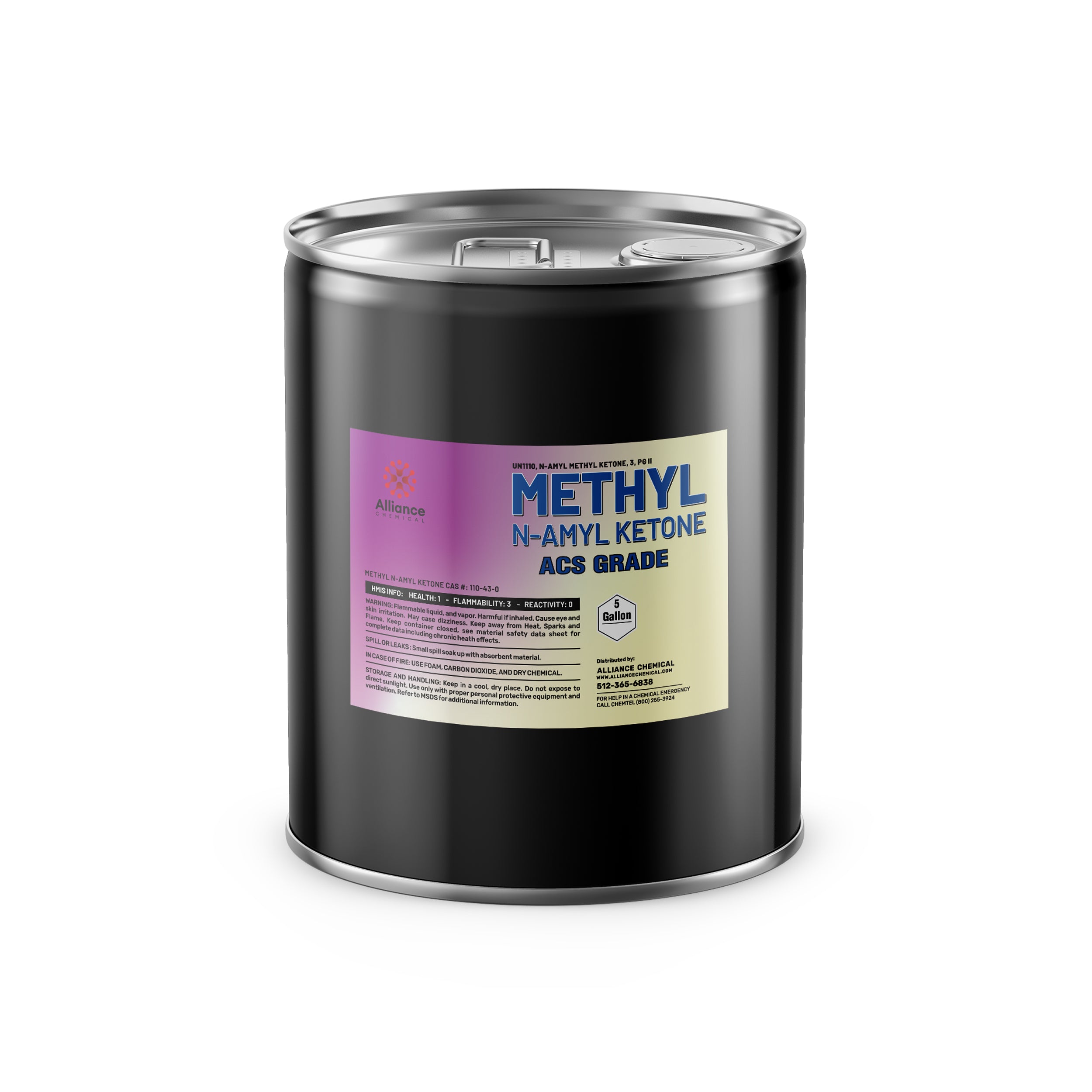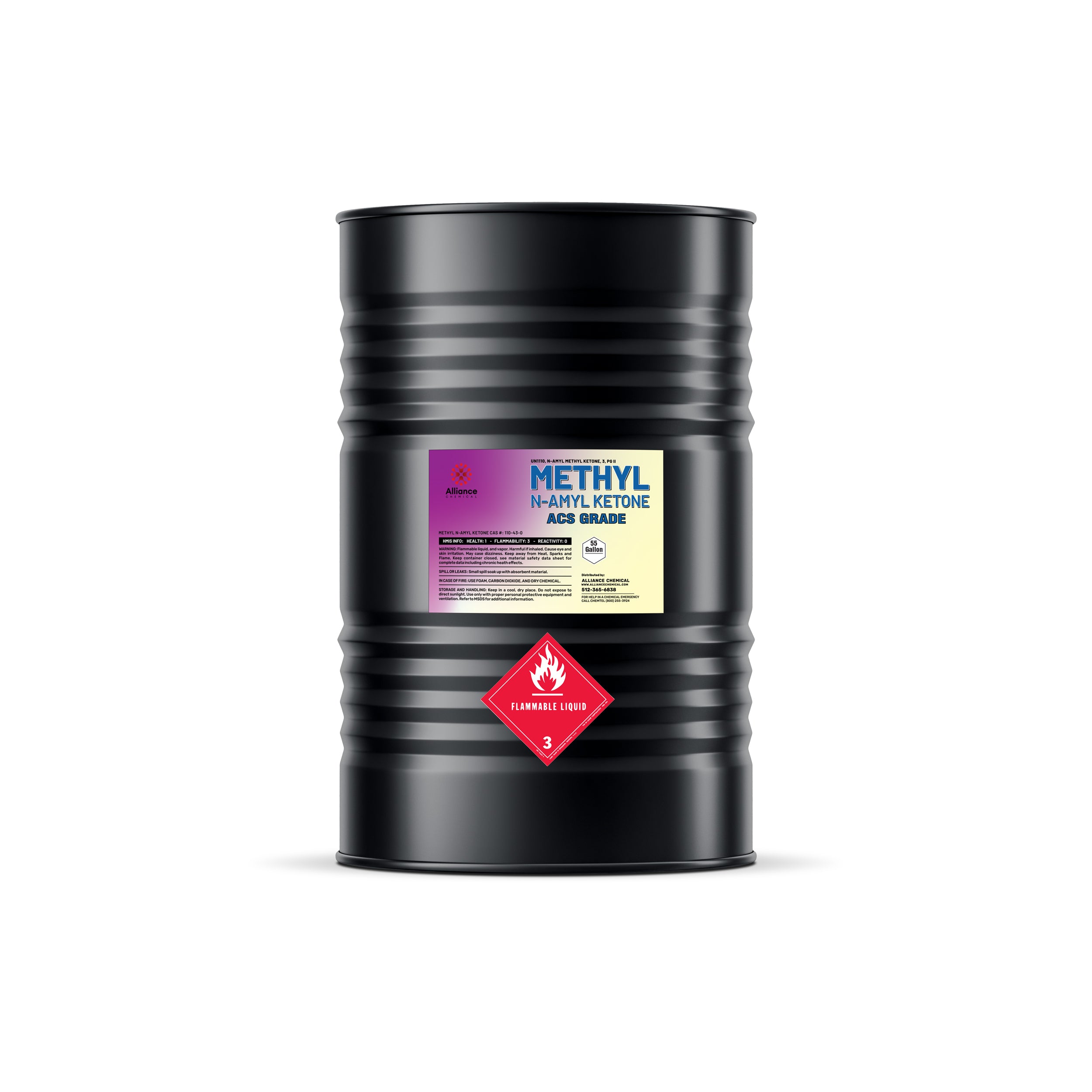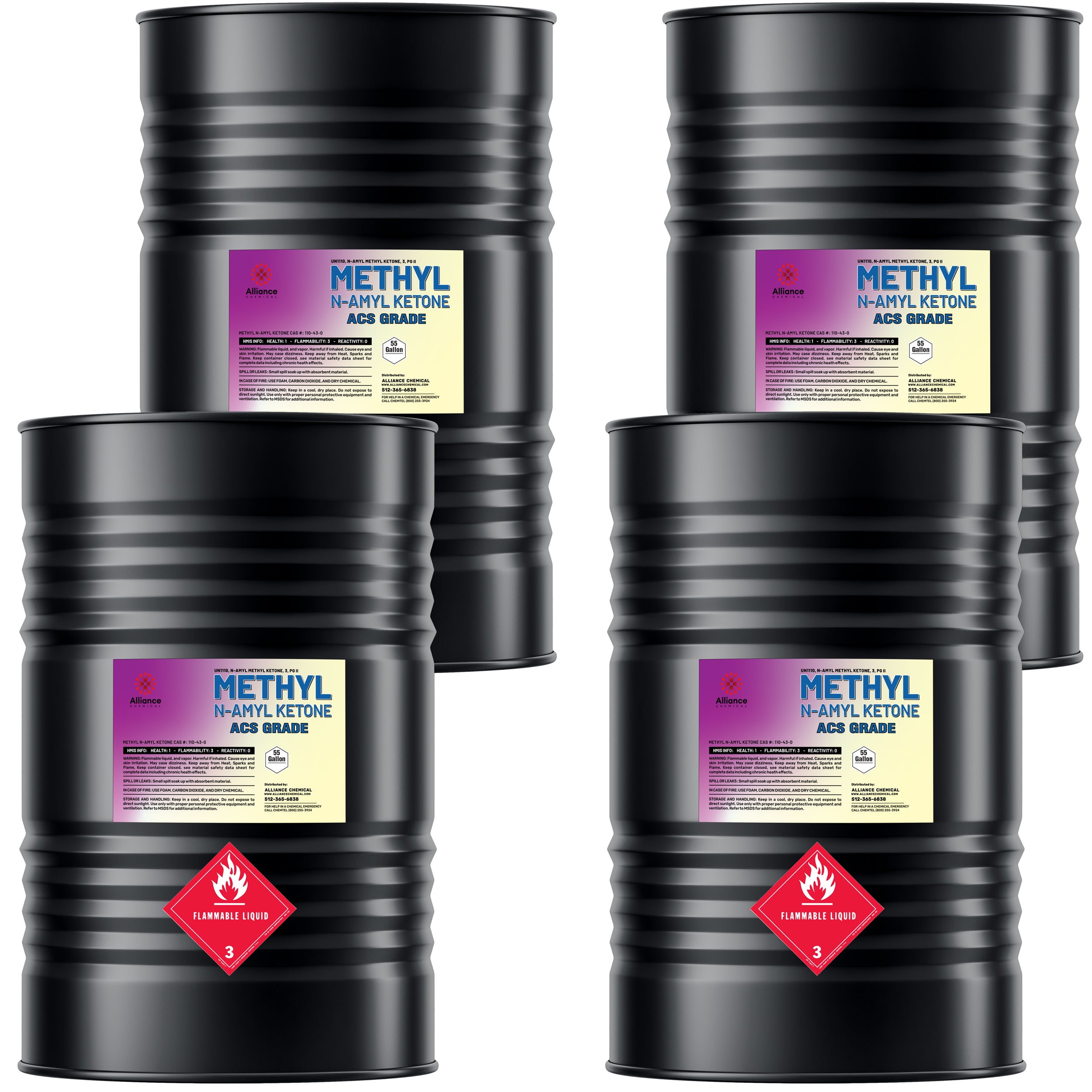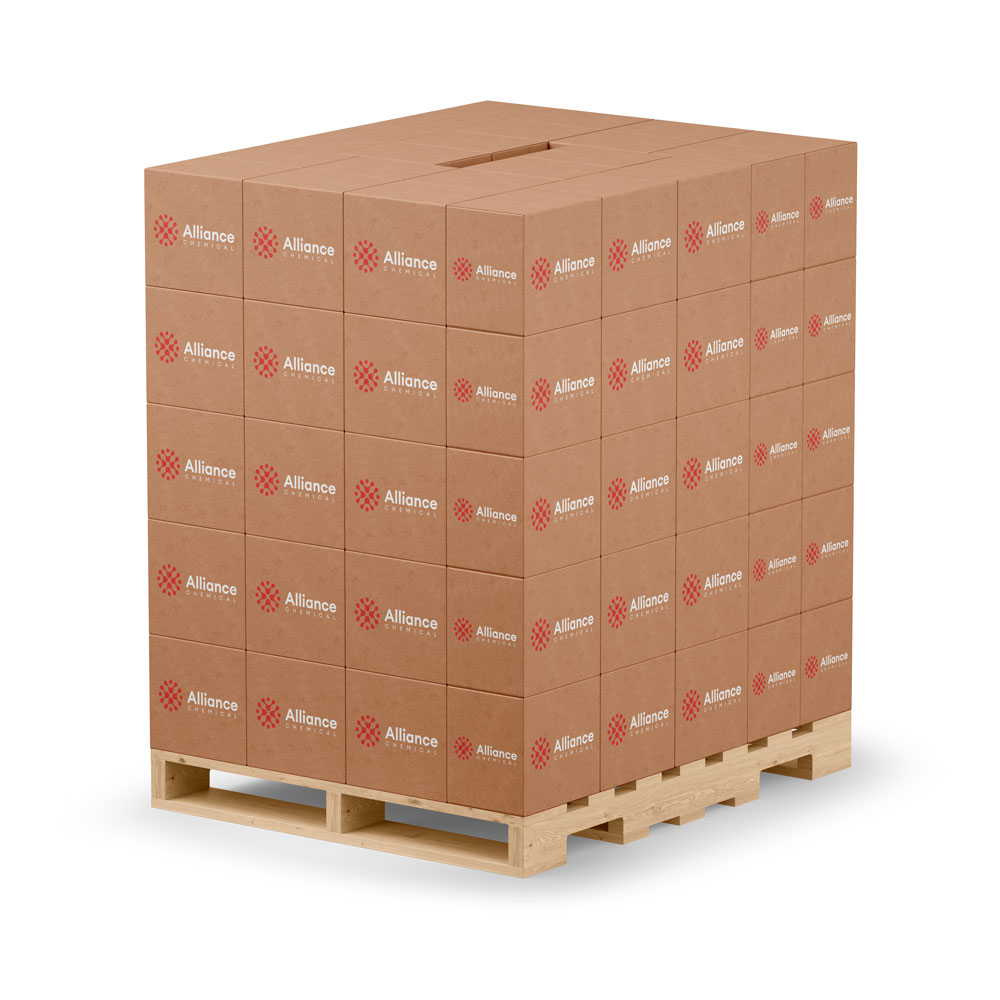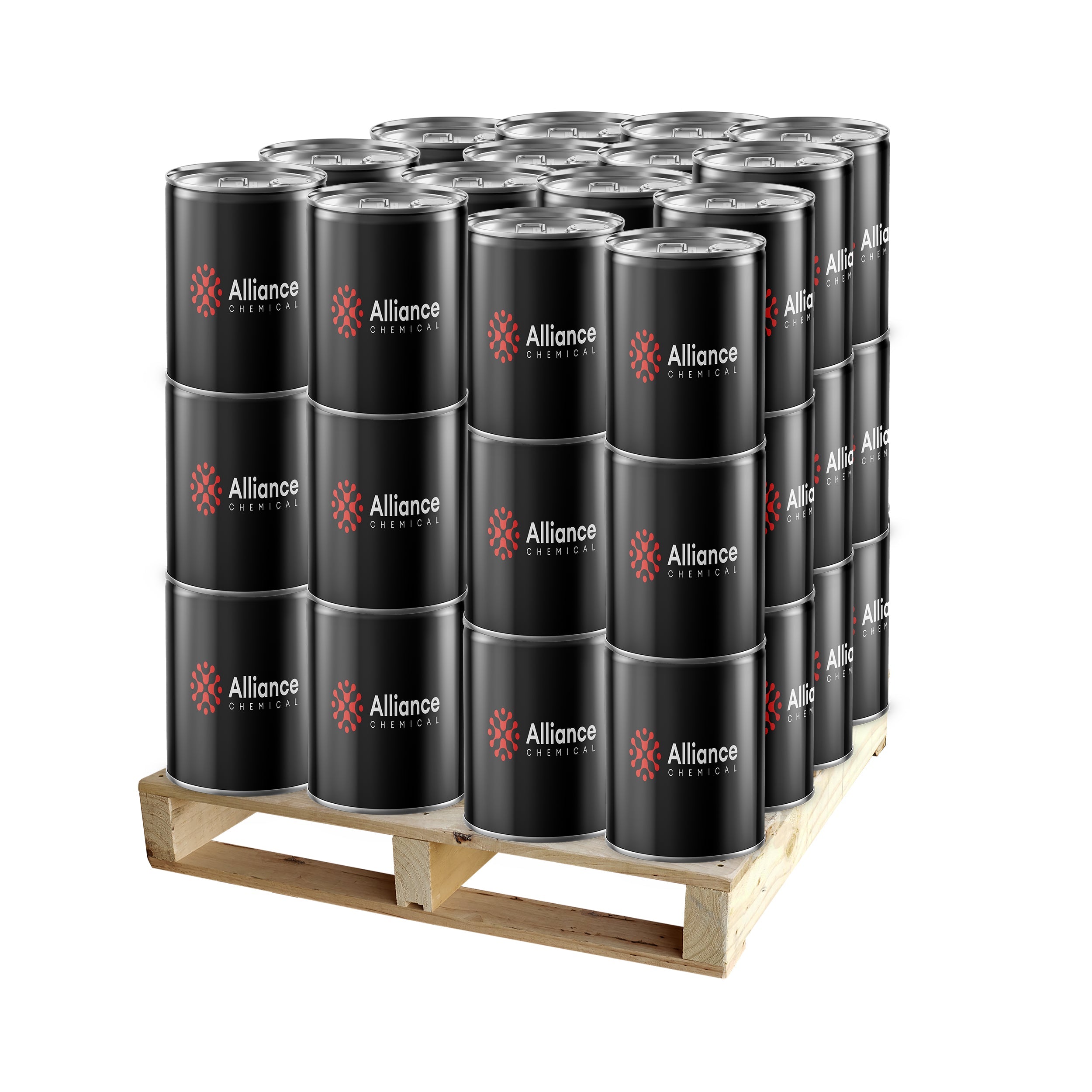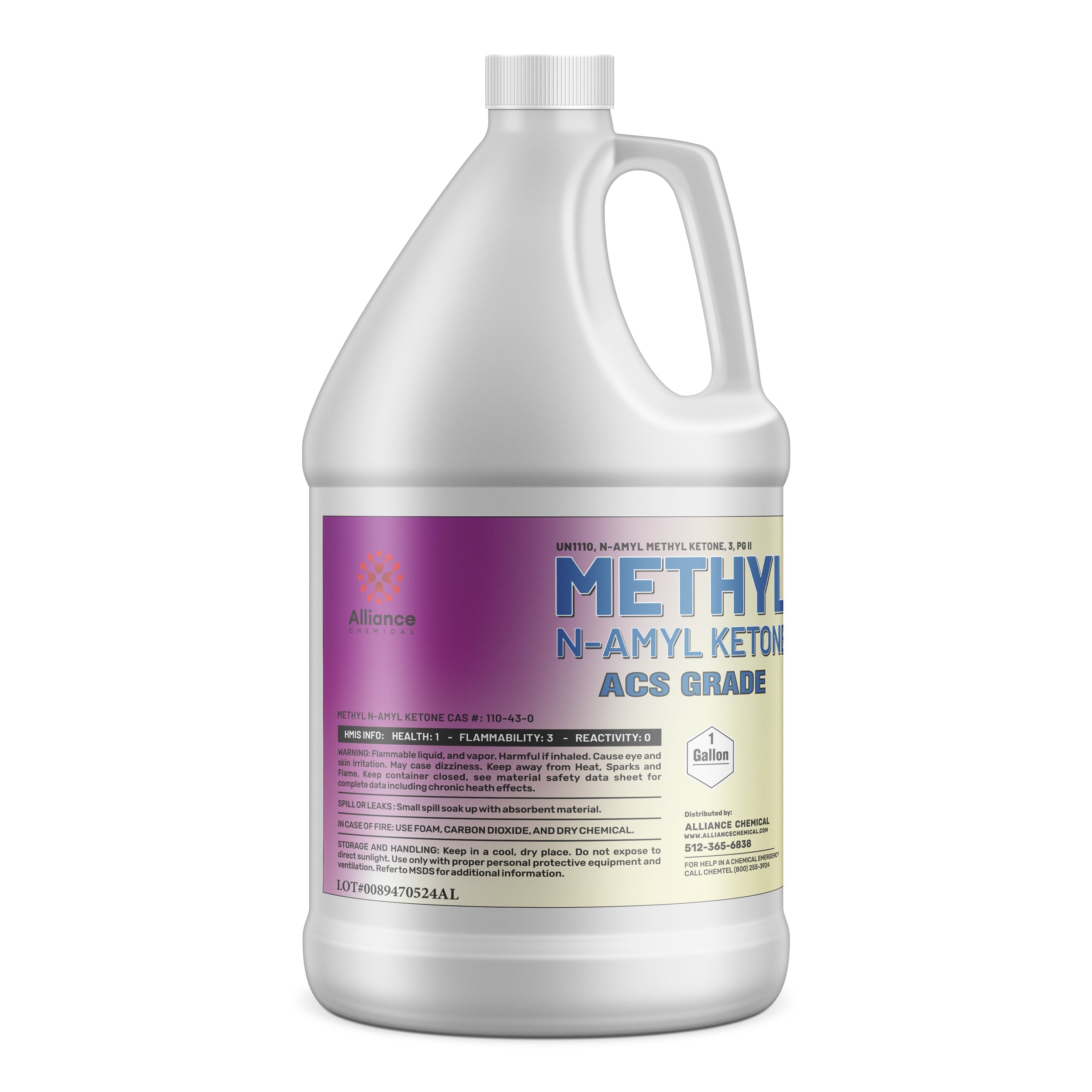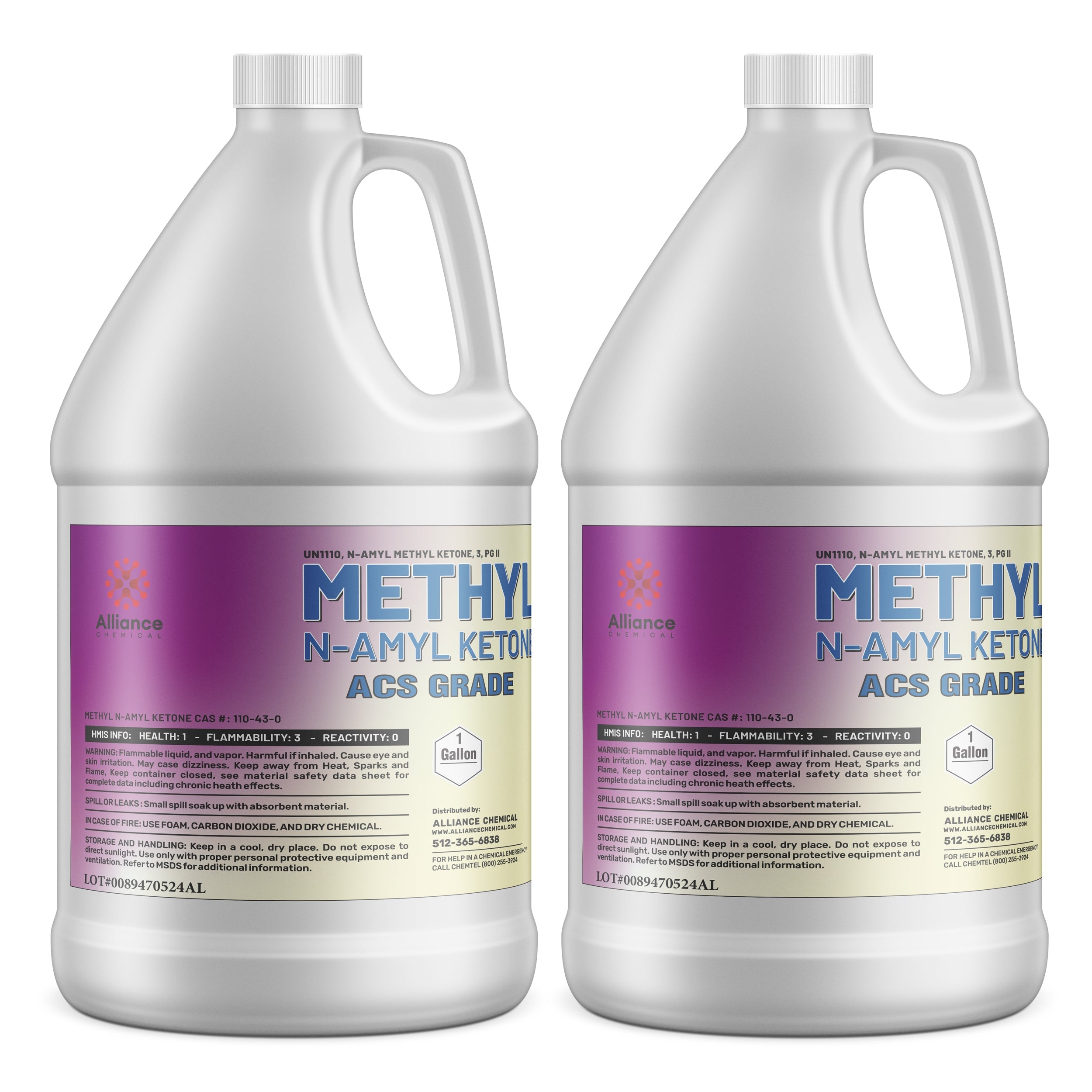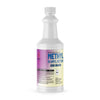Methyl n-Amyl Ketone (MNAK) ACS Grade
Category : Ketones
$30.09
$190.00
84%
Off
Unit price
Quantity
Ask a question
Product Overview
Methyl n-Amyl Ketone (MNAK) ACS Grade is a colorless liquid ketone with a characteristic solvent odor, selected for its superior solvency and broad compatibility with a wide range of organic systems. With a high purity specification (assay typically 99.6% and a minimum of 99%), MNAK offers predictable performance in formulated products. The ACS grade designation ensures compliance with established chemical reagent standards, meeting the stringent criteria of Reagent Chemicals and USP-NF monographs when used in pharmaceutical, coating, and adhesive workflows. Its controlled water content and low impurity profile support formulation stability, reduced color, and consistent drying characteristics in industrial applications. The product's volatility, moderate polarity, and compatibility with various organic solvents make it a versatile component for paints, coatings, inks, and cleaning formulations.
In addition to its role as a primary solvent, MNAK serves as an effective intermediate in organic synthesis and as a solvent for adhesive formulations where robust solvency and controlled evaporation are required. Its physical properties, including a boiling point range of 164–166°C and a refractive index of ~1.426, provide important benchmarks for quality control and process optimization in production environments. The combination of high assay, low residual impurities, and precise specification alignment supports reliable performance across multiple industrial sectors.
Key Properties
- Product Name: Methyl n-Amyl Ketone (MNAK) ACS Grade
- Chemical Formula: C₈H₁₈O
- Molecular Weight: 128.20 g/mol
- Appearance: Colorless liquid
- Odor: Characteristic ketone odor
- Boiling Point: 164–166°C
- Freezing Point: N/A
- Specific Gravity (20°C): 0.805
- Density (25°C): 0.805 g/mL
- Vapor Pressure (20°C): 5.2 mmHg
- Vapor Pressure (25°C): 1.5 mmHg
- Solubility in Water: Slightly soluble; miscible with organic solvents
- Refractive Index (20°C): 1.426
- Flash Point: 11°C (52°F)
- Boiling Point Range: 164–166°C
- Purity (Assay): 99–100% (typical 99.6%; test method: titration with standardized NaOH)
- Residue After Ignition: ≤ 0.1% (typical 0.05%)
- Chloride: ≤ 25 ppm (typical 5 ppm)
- Nitrate/Nitrite (NO3-): ≤ 5 ppm (typical 1 ppm)
- Ammonium (NH4+): ≤ 1 ppm (typical 0.2 ppm)
- Sulfate (SO4²⁻): ≤ 50 ppm (typical 10 ppm)
- Phosphate (PO4³⁻): ≤ 20 ppm (typical 5 ppm)
- Arsenic (As): ≤ 0.5 ppm (typical 0.1 ppm)
- Heavy Metals (as Pb): ≤ 0.2 ppm (typical 0.05 ppm)
- Iron (Fe): ≤ 0.2 ppm (typical 0.05 ppm)
- Copper (Cu): ≤ 0.2 ppm (typical 0.05 ppm)
- Manganese (Mn): ≤ 0.5 ppm (typical 0.1 ppm)
- Nickel (Ni): ≤ 0.5 ppm (typical 0.1 ppm)
- Lead (Pb): ≤ 0.2 ppm (typical 0.05 ppm)
- Zinc (Zn): ≤ 1 ppm (typical 0.2 ppm)
- Aluminum (Al): ≤ 0.5 ppm (typical 0.1 ppm)
- Chromium (Cr): ≤ 0.2 ppm (typical 0.05 ppm)
- Cobalt (Co): ≤ 0.2 ppm (typical 0.05 ppm)
- Calcium (Ca): ≤ 25 ppm (typical 5 ppm)
- Magnesium (Mg): ≤ 50 ppm (typical 10 ppm)
- Potassium (K): ≤ 25 ppm (typical 5 ppm)
- Sodium (Na): ≤ 25 ppm (typical 5 ppm)
- Substances Reducing Permanganate: Passes test
- Sulfurous Acid (H₂SO₃): ≤ 5 ppm (typical 1 ppm)
Common Applications
- Application Category: Solvent for Paints – Used in formulation of industrial coatings to improve flow, leveling, and film formation, delivering consistent solvent power and evaporation profiles across batch production.
- Adhesive Component: Adhesive Formulations – Solvent in adhesive systems to optimize viscosity, cure times, and substrate wetting for durable bond lines.
- Extraction Solvent: Pharmaceutical Extraction – Employed in the isolation and purification of active pharmaceutical ingredients (APIs) due to its solvency and selectivity characteristics.
- Intermediate in Organic Synthesis: Chemical Manufacturing – Serves as a synthetic precursor or reagent in the preparation of downstream intermediates and specialty chemicals.
- Cleaning Agent: Industrial Cleaning – Effective residue removal in equipment and process lines, compatible with common industrial cleaning protocols.
- Co-Solvent Systems: Formulation Additive – Used in combination with other solvents to tailor evaporation rate and final film properties in coatings.
- Degreasing and Maintenance: Surface Preparation – Facilitates degreasing of metal surfaces prior to coating or bonding operations.
Safety Precautions
Store Methyl n-Amyl Ketone in a cool, dry place away from heat sources and open flames. Use containers made of HDPE or glass, ensure proper ventilation, and avoid contact with strong oxidizing agents and acids. Always wear appropriate PPE, including chemical-resistant gloves, goggles, and protective clothing. Maintain inert atmosphere where applicable to prevent oxidation and degradation, and follow standard handling procedures per the SDS when transferring and mixing in process equipment.
In case of exposure, follow standard emergency procedures: prevent further exposure, ventilate the area, and seek medical attention if irritation, dizziness, or signs of overexposure occur. Adhere to recommended first-aid measures for eyes, skin, inhalation, and ingestion as outlined in the SDS: rinse eyes thoroughly, wash skin with soap and water, move affected individuals to fresh air, and avoid inducing vomiting unless instructed. Ensure spill control measures are in place and use appropriate absorbents for containment and cleanup.
Benefits
✔ High Purity ACS Grade – Meets or exceeds ACS Reagent Grade and USP-NF monograph expectations, ensuring reliable performance in analytical and preparative work.
✔ Consistent Solvency – Excellent solvency across paints, coatings, adhesives, and cleaners, supporting uniform application and film formation.
✔ Quality-Controlled Impurities – Low impurity profile (chlorides, metals, sulfates, nitrates) facilitates stable formulations and fewer processing interruptions.
| Property | Value |
|---|---|
| Molecular Weight | 100.16 g/mol |
| Formula | C6H12O |
| Grade | ACS |
| Flash Point | 49 |
| Form | Liquid |
| Solubility | Soluble in organic solvents, slightly soluble in water |
| Appearance | Clear, colorless liquid |
| Melting Point | -35 °C |
| Boiling Point | 151 °C |
| Specific Gravity | 0.815 |
| Industry | Industrial, Chemical Research, Petroleum |
UE3-B41-ZFC
$30.09
$190.00
84%
Off
Unit price
Compare Products
| Price |
|---|
| SKU |
| Rating |
| Discount |
| Vendor |
| Tags |
| Weight |
| Stock |
| Short Description |

